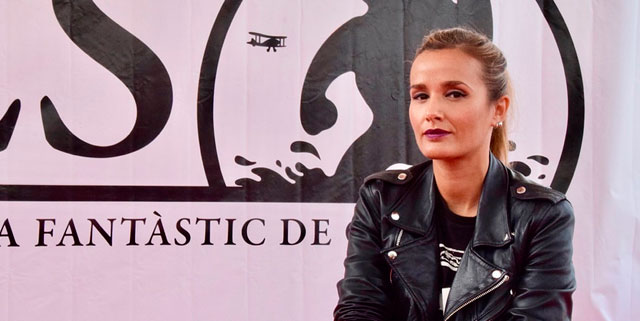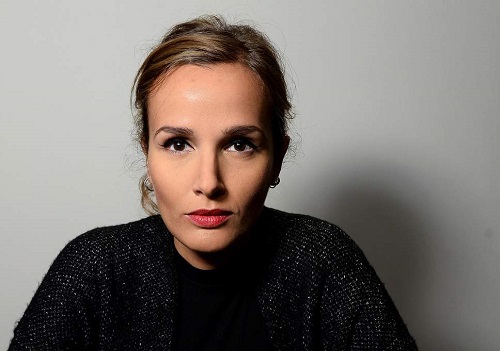

There is an especially well-known scene where Bill dresses in drag, tucks his penis between his legs and dances in front of a camera this is not meant to be a comical scene but without fail, whenever I watch this movie with a group, someone cannot restrain their laughter. He is described as a gay man whose mental illness has driven him to murder his romantic partners, and, subsequently, random women.
#Julia ducournau gay serial#
The film’s antagonist, Buffalo Bill, played by Ted Levine, is a serial killer who abducts, murders, and skins women in order to create a skin suit to complete his transformation into a woman. Ted Levine in The Silence of the Lambs (1991) © 1991 – MGMĪ glaringly harmful horror trope is coding trans bodies as villainous, particularly in Jonathan Demme’s horror classic, The Silence of the Lambs. While Aja breaks down many slasher flick tropes in High Tension, he is still depicting societal fears about the LGBTQ+ community and the threats many perceive that they pose to our current hegemony. High Tension is a phenomenal example of French nihilistic horror and of bending the Final Girl concept into something new, but it still relies upon harmful queer tropes to create its villain. While her queerness is metaphorically destroying the typical idea of family, Marie also literally destroys Alex’s family, murdering her parents and brother.

In Films of the New French Extremity: Visceral Horror and National Identity, Alexandra West says of High Tension, “Unable to cope with her homoerotic desires, Marie manifests a hulking male figure to carry out her secret desires of destroying everything and everyone that could possibly keep her and Alex apart.” Marie’s repression of her sexuality manifests as violence, which becomes “a threat to patriarchal heteronormative family” (West, 121). She further “queers” the idea of the typical hero by actually being the story’s villain – she creates a masculine figure to fight back against to prove her love for Alex. Marie is “queering” the typical horror hero and fighting back against the killer, rather than falling victim to him. Even her actions are seen as masculine – she is rescuing the “damsel in distress” when typically that role is taken by a male protagonist. Basically, she looks like the stereotypical representation of a lesbian. With a short haircut and baggy clothes, she exudes a masculine energy, particularly next to Alex, who is coded as typically feminine. Cécile de France in Haute tension (2003) © Lions Gate Home EntertainmentĪs the film begins, Marie is immediately coded as queer. However, it is eventually revealed that Alex has been the killer and kidnapper all along, driven to insanity by her love for her best friend. Set in the French countryside, Marie, played by Cecile de France, tries to rescue her best friend, Alex, played by Maiwenn, from a psychotic killer.
#Julia ducournau gay tv#
TV Tropes describes it as “an unfortunate cocktail of censorship and bigotry rendered all lesbian characters on screen exclusively psychotic and villainous” and that it “carries uncomfortable subtext: go straight or go crazy.” A prime example of this is Alexandre Aja’s subversive slasher flick, High Tension. One of these tropes is the psycho lesbian who becomes so obsessed with another woman that it drives her to kill.


While our current cultural context is evolving into a slightly more accepting one, this genre has perpetuated toxic tropes, two of which that I’ll discuss here, that depict LGBTQ+ characters as deviant, horrific monsters. Horror ultimately reflects societal fears and for much of recent history, society has been afraid of gayness and the threat it poses heteronormative conceptions of family and relationships. While gay horror directors and fanatics have helped shape horror film, their work is eclipsed by toxic tropes created to “other” LGBTQ+ characters and make them into villains. Horror is not only about queerness, but is shaped by queerness, with LGBTQ+ directors, like Clive Barker and Don Manici, creating horror classics such as Hellraiser and Child’s Play, respectively. In his book, Queer Horror Film and Television: Sexuality and Masculinity at the Margins, Darren Elliott-Smith says, “…the study of monstrous homosexuality in the horror film has also revealed the celebratory pleasures offered to queer, gay and lesbian viewers’ oppositional identification with the very same monsters that threaten the norm.” Our identities threaten heteronormativity and we cheer on those monsters that do the same. Gay horror fans like myself see ourselves in these narratives about monstrosity and “otherness” and take hold of them, making them our own. It’s a genre about, among other things, destroying societal conceptions of heteronormativity and domesticity.


 0 kommentar(er)
0 kommentar(er)
